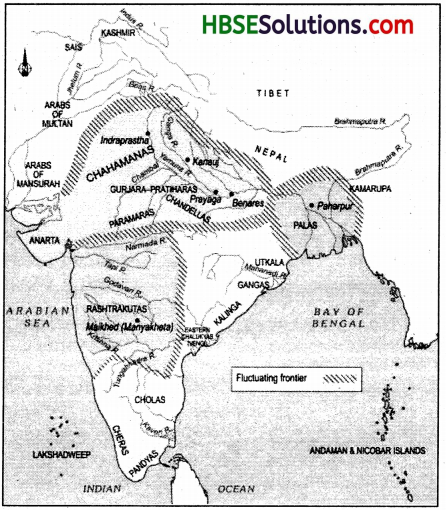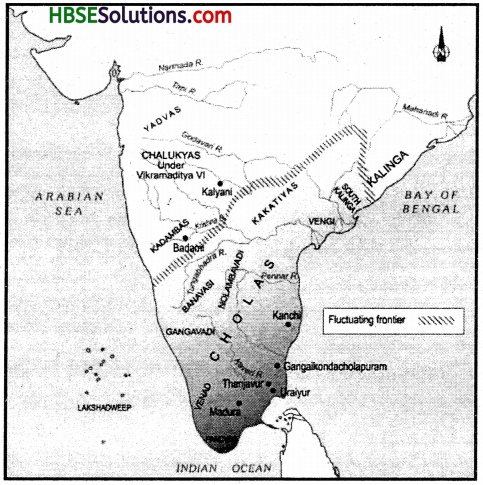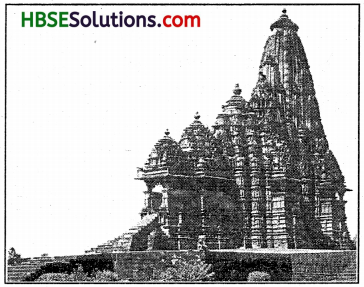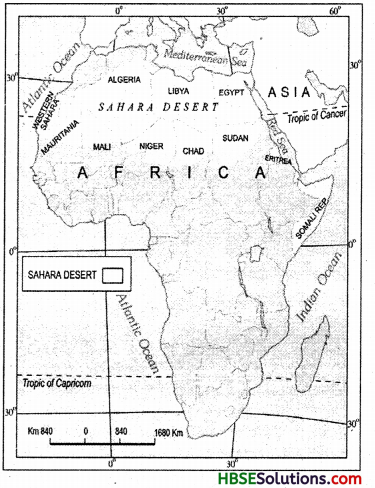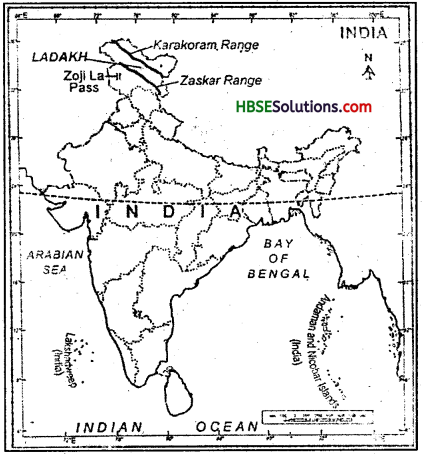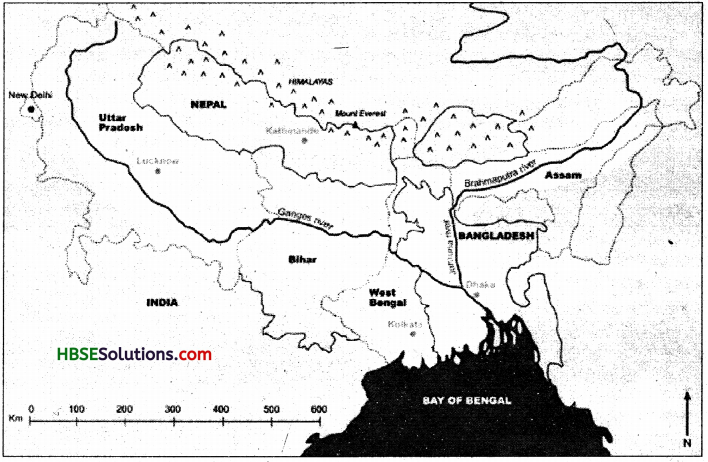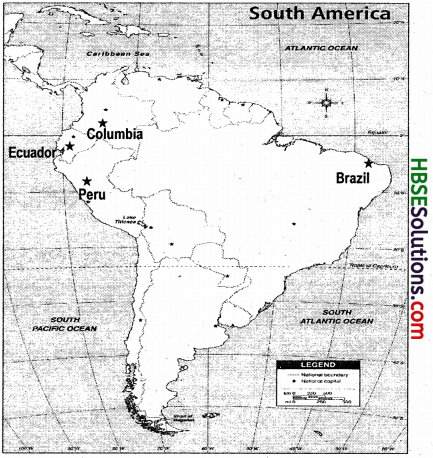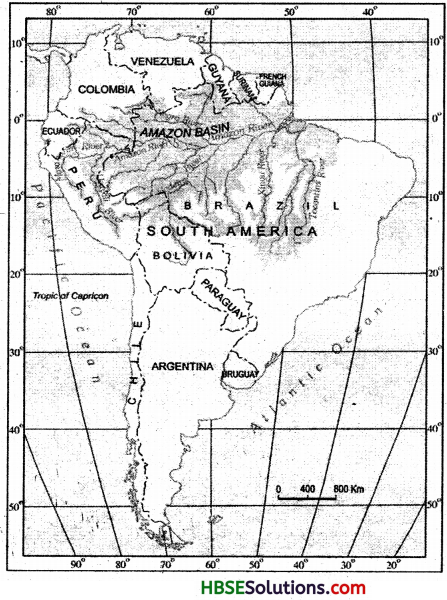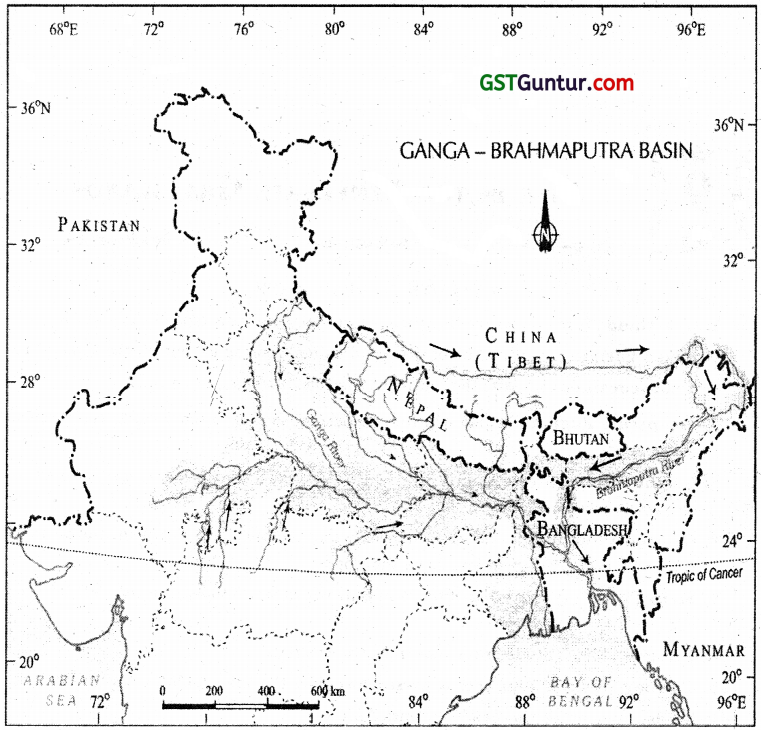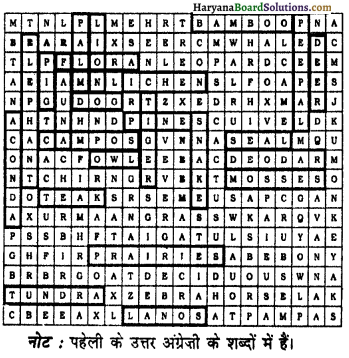Haryana State Board HBSE 7th Class English Solutions Honeycomb Chapter 2 A Gift of Chappals Textbook Exercise Questions and Answers.
Haryana Board 7th Class English Solutions Honeycomb Chapter 2 A Gift of Chappals
HBSE 7th Class English A Gift of Chappals Textbook Questions and Answers
Comprehension Check
A Gift Of Chappals Word Meaning HBSE 7th Class Question 1.
What is the secret that Meena shares with Mridu in the backyard?
Answer:
Meena shares a secret with Mridu. She tells her that they had found a poor cat outside the gate that morning. She wanted to keep this a secret so that Patti does hot go away.
Class 7 Gift Of Chappals Question Answer HBSE Question 2.
How does Ravi get milk for the kitten?
Answer:
Ravi got the milk for himself from Patti. Patti wanted the tumbler back. He pretended did that he would wash it himself. He ran to put the milk in the coconut shell.
A Gift Of Chappals Questions And Answers HBSE 7th Class Question 3.
Who does he say the kitten’s ancestors are? Do you believe him?
Answer:
Kitten’s ancestors were Mahabalipuram Rishi-Cat. No, we do not believe him.

Gift Of Chappals Summary HBSE 7th Class Question 4.
Ravi has a lot to say about M.P.Poonai. This shows that
(i) he is merely trying to impress Mridu.
(ii) his knowledge of history is sound.
(iii) he has a rich imagination.
(iv) he is an intelligent child.
Which of these statements do you agree/ disagree to?
Answer:
(i) he is merely trying to impress Mridu.
A Gift Of Chappals Question Answer Class 7 HBSE Question 5.
What was the noise that startled Mridu and frightened Mahendran?
Answer:
Mridu was started to hear the kreeching sound coming from the window. Mahendran was frightened and in turn tripped a few chillies over himself.
Comprehension Check
Question 1.
The music master is making lovely music. Read aloud the sentence in the text that expresses this idea.
Answer:
“The music-master’s notes seemed to float up and settle perfectly into the invisible tracks of the melody.
Question 2.
Had the beggar come to Rukku Manni’s house for the first time? Give reasons for your answer.
Answer:
No, Beggar had not come to Rukku Manni’s house for the first time. Mother was heared telling Ravi to send the beggar away as he had been coming every day for the past week. She wanted him to find another to beg from.
Question 3.
“A sharp Y-shaped line had formed between her eyebrows.” What does it suggest to you about Rukku Manni’s mood?
Answer:
Rukku Manni was very angry at the disappearance of Music master’s chappal. She could make out that children had played a trick.
Working With The Text
Question 1.
Complete the following sentences.
(i) Ravi compares Lalli’s playing the violin to
(ii) Trying to hide beneath the tray of chillies, Mahendran
(iii) The teacher played a few notes on his violin, and Lalli
(iv) The beggar said that the kind ladies of the household
(o) After the lesson was over, the music teacher asked Lalli if
Answer:
(i) derailing the train all the time
(ii) tipped a few chillies over himself
(iii) stumbled behind him on her violin
(iv) are very kind soul. I have kept my body and soul together on their gen-erosity for a whole work
(v) If she had seen his chappals as he had reminded having kept them there.
Question 2.
Describe the music teacher, as seen from the window.
Answer:
The music master appeared to be a bony figure. He had a bold head with a tringe of oiled black hair falling around his ears. A gold chain gleamed on his leathery neck and diamond ring glittered on his hand. He was beating the floor with his big toe.
Question 3.
(i) What makes Mridu conclude that the beggar has no money to buy chappals?
(ii) What does she suggest to show her concern?
Answer:
(i) Mridu concludes that beggar has no money to buy the chappal because even when sun is so hot, he is walking bare footed. His bare feet have got large blisters.
(ii) Mridu was very’ worried and suggested that old looking chappal’s lying in the verandah could be given to the beggar.
Question 4.
“Have you children…” she began, and then, seeing they were curiously quiet, went on more slowly, “seen anyone lurking around the verandah?”
(i) What do you think Rukku Manni really wanted to ask?
(ii) Why did she change her question?
(iii) What did she think had happened?
Answer:
(i) Rukku Mani wanted to ask the Children Ravi, Mridu and Meena if they had stolen the Chappal.
(ii) She changed the question when She saw them to be curiously quiet.
(iii) She thought that some stranger might have stolen the Chappal.
Question 5.
On getting Gopu Mama’s chappals, the music teacher tried not to look too happy. Why?
Answer:
The music teacher tried not to look too happy as he wanted to show that he was angry with the behaviour of the naughty children.

Question 6.
On getting a gift of chappals, the beggar vanished in a minute. Why was he in such a hurry to leave?
Answer:
The beggar had been coming to the house for a week; His feet had got blisters due to hot sun. So he disappeared at once on getting the chappals as he did not want to loose the chappals.
Question 7.
Walking towards the kitchen.with Mridu and Meena, Rukku Manni began to laugh. What made her laugh?
Answer:
Ruku Mani began to laught at the thought of that how would her husband react on knowing that she gave his chappal on knowing that she gave his chappal to the music master.
HBSE 7th Class English A Gift of Chappals Important Questions and Answers
Very Short Answer Type Questions
Question 1.
What does Mridu notice when she entered the house?
Answer:
When Mridu entered she noticed a pair of large black slippers. They were covered with dust.
Question 2.
Where had the cat been hidden by the children?
Answer:
The cat had been hidden inside a tom football lined with sacking and filled with sand.
Question 3.
Who had got the milk for the poor kitty and from where?
Answer:
Ravi had got the milk for the poor kitty from the kitchen.
Question 4.
What was the name of the cat?
Answer:
The cat had been named as Mahendravarma Pallava Poonai because it was fine breed of cat.
Question 5.
How did Mahendran land up on the tray of red chillies?
Answer:
When Ravi startled the kitty, he bounced up towards a bamboo tray of red chillies. As, a result he tipped few chillies over himself.

Question 6.
What is the music master’s music compared to?
Answer:
The music master’s notes seemed to float up and moved smoothly into the rails.
Question 7.
How did the beggar try to make himself feel at home?
Answer:
The beggar on reaching the garden, spread the cloth under neem-tree to take a snooze.
Question 8.
What opinion did the beggar form of the ladies of the house?
Answer:
The beggar regarded the ladies of the house to be very generous. They had kept his body and soul together.
Question 9.
How did the beggar win the sympathy of others?
Answer:
The beggar showed his feet to show large link blisters on the soles of his bare feet. This made the people of the house to show concern.
Question 10.
Whose slippers was beggar given to wear?
Answer:
The beggar was given to wear slippers of the music-master as looked shabby to the children. They were of the right size.
Question 11.
Why did music-master get upset on coming out of the house?
Answer:
The music-master got upset because he could not find his chappals where he had kept them. He had bought them from Mount Road.
Question 12.
Whose chappals were given to music-master?
Answer:
Music-master was given chappals of Gopu Mama. The music master felt happy and cursing the children went away.

Short Answer Type Questions
Question 1.
How had the cat been made the member of their family?
Answer:
The cat had been found outside the gate. He was kept inside a torn football lined with sack. He was given milk from coconut half-shell. He had been named Mahendran and given milk to drink by Ravi. He was a fine breed of cat.
Question 2.
How has Ravi talked of the cat to be a descendant of a historical character?
Answer:
The full name of the cat was kept to be Mahendravarma Pollava Poonai. Mahendran was believed to have descended from statue at Mahabalipuram. It was a close relative of the Pallava lion, emblem of Pallava dynasty.
Question 3.
Describe the way Lalli was playing violin.
Answer:
Lalli was learning to play violin from her music master. She played in a very awkward manner. The violin was being played like a train whizzing on and on. While playing she produced kreeching sound.The violin looked quite helpless and unhappy in her hands.
Question 4.
Describe the encounter with the beggar.
Answer:
The beggar had entered the garden of the house. He sat under the neem tree on his upper cloth. The beggar was very confident of getting alms there. But to his disappointment, turned sad on knowing that he was being turned out.
The beggar had large blisters on his feet and feared to go in afternoon heat. The children of the house gave him chappals of the music-master to wear.
Question 5.
Describe the search made by music- master for the chappald.
Answer:
The music master had worn a large pair of black slippers. They had been dragged by Ravi in the backyard. When music master came out of the house, he searched for his chappals. He looked over the railing and crouched near the flower pots. Then it was realised that, the chappals had been given to the beggar. Rukku Manni was angry and Gopu Mama’s Chappals were brought to be worn.
Some Other Questions For Examination
Question 1.
How did the cat react when he heard the sound made by Ravi?
Answer:
The cat was frightened to hear Ravi’s sound. Hejumped up withhair standing onend. He rushed towards a bamboo tray of red chillies that had been set out to dry. He tipped afew chillies over himself when he was tryingto hide beneath it.
Question 2.
Where had the cat been hidden by the children?
Answer:
The cat had been hidden inside a torn football lined with sacking and filled with sand.
Question 3.
What is the music master’s music compared to?
Answer:
The music master’s notes seemed to float up and moved smoothly into the rails.
Question 4.
What opinion did the beggar form of the ladies of the house?
Answer:
The beggar regarded the ladies of the house to be very generous. They had kept his body and soul together.
Question 5.
How did the beggar win the sympathy of others?
Answer:
The beggar showed his feet to show large pink blisters on the soles of his bare feet. This made the people of the house to show concern.
Question 6.
How did Ravi be fool Tapi?
Answer:
Tapi, the grandmother did not like any kitten. Therefore, Ravi had the kitten in a tom football. One day, Tapi saw Ravi take a glass of milk from the kitchen. She doubted about Ravi’s, mischief. Ravi had to drink the whole milk. Paati knew that Ravi could not drink all the milk. Therefore, she asked Ravi to give the tumbler back. He told her that he would wash the tumbler himself. She got helpless and left for her own house.

Question 7.
Describe the way Lalli was playing violin.
Answer:
Lalli was learning to play violin from her music master. She played in a very awkward manner. The violin was being played like a train whizzing on and on. While playing she produced kreeching sound. The violin looked quite helpless and unhappy in her hands.
Multiple Choice Questions
Question 1.
In which city did Mridu live?
(a) Delhi
(b) Mumbai
(c) Chennai
(d) Kolkata
Answer:
(c) Chennai
Question 2.
What was the name of Mridu’s grandfather?
(a) Thatha
(b) Hatha
(c) Katha
(d) Nahatha
Answer:
(a) Thatha
Question 3.
Who was Rukku Manni to Mridu?
(a) mother
(b) friend
(c) aunt
(d) teacher
Answer:
(c) aunt

Question 4.
Where did Mridu take off her slippers?
(а) near a pair of large black slippers
(b) near a pair of red sandals
(c) near the kitten
(d) none of these
Answer:
(а) near a pair of large black slippers
Question 5.
What was the full name of the kitten?
(a) Mahendravika Pallavi Poone
(b) Mahendra Varma Pallavi
(c) Mahendravarma Pallavi Poonai
Answer:
(c) Mahendravarma Pallavi Poonai
Question 6.
‘beringed’means:
(a) lost his ring
(b) is wearing a ring
(c) was wearing a bracelet
(d) none of these
Answer:
(b) is wearing a ring
Question 7.
From where had the music master bought the chappals?
(a) Mount Road
(b) Mount Abby
(c) Mount Pavillion
(d) Queen’s Road
Answer:
(a) Mount Road

Make Sentences
Use the following words in sentences of your own:
(а) Whispered
(b) Gleaming
(c) Appeared
(d) Weired
(e) Impressed
Answer:
Sentences:
(а) Whispered: Sukriti whispered the secret into mother’s ears and got relief.
(b) Gleaming: The wedding lounge was gleaming with stars and lights.
(c) Appeared: Suddenly, a beautiful rainbow appeared in the sky.
(d) Weired: The traveller looked at the stranger with weired looks.
(e) Impressed: Everybody was impressed with the polite behaviour of bride.
A Gift of Chappals Passages for Comprehension
Read the passages carefully and answer the questions that follow:
Passage – 1
She set ………… and scrawny.
Questions:
(i) Who is she?
(ii) What are ‘those1 refer to?
(iii) Which two adjectives are used for toe?
(iv) Where is she at the moment?
Answers:
(i) She is Mridu.
(ii) Those refer to large slippers.
(iii) Long and scrawny.
(iv) She has gone to meet her grandmother’s aunt Rukku Manni.
Passage-2
‘We found ……………… a cat.’
Questions:
(i) Who are ‘we’?
(ii) What was kept a secret?
(iii) Who does not want cat in the house?
(iv) Choose a word which means same as “cry of a cat”?
Answers:
(i) We are Lalli, Ravi and Meena.
(ii) Patti was not aware about the possession of the cat in the house.
(iii) Paati did not want the cat in the house.
(iv) ‘Mewing’.

Passage-2
Then she …………… feed Mahendran.’
Questions:
(i) Who is she?
(ii) What did tumbler contain?
(iii) Why was the milk poured into the coconut¬shell?
(iv) Who is Mahendran?
Answers:
(i) She is Patti.
(ii) The tumbler contained milk.
(iii) The milk was poured into the coconut shell so that the kitten could drink the milk.
(iv) Mahendran is the name of the cat.
Passage – 4
‘Think I’m ……….. about history.
Questions:
(i) Name the speaker.
(ii) What had made speaker utter, “Think I’m joking?”
(iii) Why does he make mention of history?
(iv) Choose a word which means opposite of ‘confused’?
Answers:
(i) Ravi is the speaker.
(ii) The speaker uttered so because he spoke very high of cat, of being symbolic of Pallava kings.
(iii) He makes mention of history because he has been to Mahabalipuram.
(iv) Clear.
Passage – 5
Mahendran looked ………….. his wits.
Questions:
(i) Why was Mahendran alarmed?
(ii) For what purpose had the coconut-shell been kept?
(iii) What consequence did M.P. Poonai have to face?
(iv) Choose a word which means ‘surprised’.
Answers:
(i) Mahendran was alarmed by listening to the shriek of Ravi.
(ii) The coconut-shell had been kept to keep milk for Mahendran.
(iii) M.P. Poonai had bounced with tray of chillies and tipped them over himself.
(iv) Alarmed.

A Gift of Chappals Translation in Hindi
Before you read Mridu is …………and Meena.
मृदु एक जवान लड़की है जो मद्रास में (जिसका नाम अब चेन्नई है) अपने दादा थाता तथा दादी तापी के साथ पल-बढ़ रही है, एक दोपहर को तापी उसे अपनी चाची रुकू मनी के घर अपनी चचेरी बहनों तथा भाइयों लाली, रवि और मीना से मिलवाने ले जाती है।
1.A smiling ……………………. and scrawny.
मुस्कराती हुई रुकुमनी ने दरवाजा खोला। रवि और मीना बाहर आए। रवि मनी को घर के अन्दर ले गया। रुको, मुझे मेरी चप्पल उतारने दो मृदु ने प्रतिवाद करते हुए हुए कहा। उसने अपनी चप्पल को एक बड़े काले जोड़े के पास रख दिया। वह मिट्टी के कारण भूरे रंग के लग रहे थे। तुम चप्पल के अगले हिस्से में हर पैर की अंगुली के स्पष्ट चिह्न देख सकते हो। दो बड़ी अँगुलियों के चिह्न लम्बे और अस्पष्ट लग रहे थे।
Word Meaning: Smiling-with a happy look = मुस्कराते हुए, Rushed out-to come out hurriedly = जल्दी से वाहर आना, Protesteddisapproval = प्रतिवाद करना, Dust-sand = मिट्टी, Clear marks–something which can be seen = स्पष्ट चिह्न, Serawny-to scribble = घसीटना, Toe-a digit of the foot = पैर की अंगुली।
2. Mridu didn’t …. ………………… half-shell.
मृदु के पास आश्चर्यचकित होने के लिए और समय नहीं था कि यह किसकी चप्पल है, क्योंकि रवि उसे घर के पिछले आँगन में घने कड़वे बेर (की साड़ी) के पीछे घसीट कर ले गया। वहाँ पर एक फटी फुटबाल के बीच, एक छोटा सा बिल्ली का बच्चा लेटा था जो कि टाट और रेत से भरा हुआ था। वह आधे नारियल के खोल से दूध पी रहा था।
Word Meaning:Wonder-a strange thing = आश्चर्य, Dragged-to pull forcefully = घसीटना, Backyard-open courtyard = आँगन, BitterSorrow = कड़वा, Torn-not intact = फटा हुआ, Lined-outline = Hita, Sacking–material for making sacs etc. = बोरा बनाने का टाट, Lapping– licking = चाटना।
3. ‘We found …………………………….. a cat.’
‘आज सुबह हमने उसे गेट के बाहर पाया। वह बेचारा म्याऊँ-म्याऊँ कर रहा था’, मीना ने कहा। “यह एक रहस्य है। अम्मा कहती है कि पाटी पाडू मामा का घर छोड़ जाएगी अगर उसे पता चलेगा कि हमारे पास बिल्ली है।”
Word Meaning: Mewing-Sound of cát = बिल्ली की बोली- म्याऊँ-म्याऊँ करना, Secret-hidden from other = गुप्ता
4. ‘People are……………………… the scent.
लोग हमें हमेशा जानवरों के साथ दयावान बने रहने को कहते हैं पर जब हम ऐसा करते हैं तो वह चीखते हैं,”ओ, उसे गन्दी….. .. चीज़ को यहाँ मत लाओ!” रवि ने कहा। “क्या तुम जानते हो कि रसोई से थोड़ा सा दूध लाना कितना मुश्किल है। पाटी ने मुझे अभी हाथ में गिलास के साथ देखा। मैंने उसे कहा कि मुझे बहुत भूख लगी है। मैं इसे पीना चाहता हूँ, पर जिस तरह से उसने मुझे देखा, मुझे उसके आभास को से दूर करने के लिए सारा पीना पड़ा।
Word Meaning: Kind-pleasant = दयालु, Scream–to shout loudly = चीखना, Creature = प्राणी, Scent-smell = सुगन्ध, आभास।
5. Then she………………feed Mahendran.’
तब वह गिलास वापस लेना चाह रही थी। पाटी, पाटी मैं इसे अपने आप धो लूँगा, मैं तुम्हें कष्ट क्यों हूँ, मैंने उससे कहा । मुझे दौड़ना पड़ा और मैंने दूध को नारियल के खोल में डाल दिया। और फिर मैंने दौड़ कर गिलास धो दिया और इसे वापस रख दिया। अब हमें महेन्द्रन को खाना देने का अलग तरीका सोचना है।”
Word Meaning: Wanted-wish = इच्छा, Tumbler-glass = गिलास, Trouble-difficult = मुश्किल, Pour-to put = डालना, Suspicious-to have doubt = शक।

6. ‘Mahendran? …………… kitty-cat name.
‘महेन्द्रण? यह बिल्ली के बच्चे का नाम है. मृदु बहुत प्रभावित हुआ। यह वास्तविक नाम था- न कि सिर्फ प्यारी बिल्ली का नाम।
Word Meaning: Impressed–to leave an impression = प्रभावित किया. Cute-pretty = सुन्दर।
7. ‘Actually his …………… Mridu giggled.
वास्तव में उसका पूरा नाम है महेन्द्रवर्मा पल्लव पूनई। संक्षिप्त में एम. पी. पूनई। यह बिल्ली की एक अच्छी नस्ल है। जरा उसके रोयें देखें। शेर की अयाल की तरह है। और क्या तुम जानते हो कि प्राचीन काल में पल्लव राजाओं का प्रतीक क्या था, नहीं जानते? उसने उत्सुकतापूर्वक मृदु की तरफ देखा। मृदु दाँत भींचकर हँसने लगी।
Word Meaning: Actually-Infact = सचमुच में, Breed-race = नस्ल, Fur-Covering to skin = रोएँ, Mane-long hair on neck of animals = अयाल, Emblem-symbol = प्रतीक, Expectantlyhopefully = आशान्वित होकर, Giggled-to laugh in a suppressed manner = दबी हँसी हँसना।
8. ‘Think I’m ……………………. ancient cat.
तुम सोच रहे हो कि मैं मजाक कर रहा हूँ? ठीक है, जरा इंतजार करो। मैं तुम्हें किसी समय दिखाऊँगा। यह बात स्पष्ट है कि तुम इतिहास के बारे में कुछ नहीं जानते हो। उसने रहस्यमय तरीके से पूछा क्या तुम महाबलि- पुरम गए हो। ठीक है जब हमारी कक्षा महाबलिपुरम गई तो मैंने उसके थाता के-थाता के-थाता के-थांता. …. आदि, आदि की प्रतिमा देखी। सच्चाई यह है कि महेन्द्रन उसी प्राचीन बिल्ली से उत्पन्न हुई है।
Word Meaning: Joking-with joke = मसखरापन, Mysteriously-obscure = गुप्त रूप से, Statue-Cast image of a person = प्रतिमा, Descended to be transmitted from = वंशक्रम, Ancient-belong to past inheritance = प्राचीन।
9.Aclose……………………. ancient Egypt!’
एक पास का रिश्तेदार अगर वैज्ञानिक तरीके से देखें तो शेर के अलावा और कोई नही है। पल्लव शेर, पल्लव राजवंश के प्रतीक। रति टहनी को ऊपर नीचे हिलाते हुए आँखों में चमक के साथ बेर की, झाड़ियों के चारों तरफ घूमता रहा। यह बिल्ली महाबलिपुरम की शृषि-बिल्ली की वंशज के अलावा कोई नहीं है। और अगर मैं तुम्हें सिर्फ याद दिलाऊँ तो वे लोग प्राचीन मिश्र में बिल्ली की पूजा करते थे।
Word Meaning:Relative-blood relation = fender, Scientifically–Related to law of science = वैज्ञानिक रूप से, Emblem-symbol = प्रतीकात्मक, Dynasty-a line of succession of kings = 109. Waving-to shake = हिलाना. Twig-branch of a tree = टहनी. Sparkling-shining = चमक , Remind—-to remember – याद दिलाना, Worshipped-to pray’ = पूजा करना, Ancient— Belong to past = प्राचीन।
10. llow he ……………… Mridu demanded.
वह किसी तरह से अपनी आवाज से प्यार करता था! मीना और मृदु ने एक दूसरे की तरफ देखा। “इस बात का किसी भी चीज से क्या मतलब है?” मृदु ने पूछा
Word Meaning: Exchanged–to change with each other = बदलना, Demanded-to ashed for forcefully = जोर से पूछा।
11. ‘luh! …………………………………….’So?’
‘हूँ! मैं बता रहा हूँ यह बिल्ली मिश्र की भगवान बिल्ली की वंशज है…. नहीं, देवी ! बसटट। या ! यही, बात है। इसलिए?’
Word Meaning: Descended-Sprung from ancestors = वशज।
12. ‘Well, one…………………. with himself.
‘ठीक है वह बिल्ली उस देवी की वंशज है जो कि पल्लव जहाज में छिपकर यात्रा करती थी। और उसके वंशज महाबलिपुरम की ऋषि-बिल्ली थी, जिसकी वंशज है, रवि ने टहनी को महेन्द्रन की तरफ दिखाया- ‘एम.पी. पूनई यहाँ’ वह अपने पर बहुत खुश होकर जोर से चिल्लाया।
Word Meaning: Stowaway-one who hides himself in a ship for securig a free passage = वह जो सुरक्षित यात्रा करने के लिए जहाज में अपने को छिपा लेता है, Shrieked-to shout = चीखना, Pleased-very happy = खुश हुआ, Flourished-toprosper = फलनाफुलना, Twig-branch to tree = टहनी, Whoop-war-cry = गरजना।

13. Mahendran ……………………… his wits.
महेन्द्रन ने चौंक कर ऊपर देखा। वह उस समय अपने पंजों को नारियल के खोल के किनारे से तेज कर रहा था। पर रवि की भयंकर वूपईक …. से क्रीच …. की आवाज थी जो खिड़की से आ रही थी। कितनी अजीब आवाज! अगर मृदु आश्चर्यचकित हो जाती, एम. पी. पूनई अपनी समझ से बहुत अधिक डर गई।
Word Meaning: Alarmed To arouse = चौका देना, Sharpening-Sensitive = कर्कश, Claws-thorry nail of a beast = पंजा. Edge-end = किनारा. Worse-very bad = बुरा. Awful-dreadful = भयंकर. Weird-strange = अजोब. Startledsurprised = हैरान, Frightened-afraid = डर. Wits-brain- समझा
14. Flair standing …… howled miserably.
उसके बाल एक ओर खड़े हो गए। वह उछल कर लाल मिर्च से भरी ट्रे जो सूखने के लिए रखी गई थी से टकरा गई। अपने आपको उसके नीचे छिपाने के लिए, उसने अपने ऊपर कुछ लाल मिर्च गिरा ली। वह दुःखी मन से चिल्लाई ‘भ्याऊँ-म्याऊँ’।
Word Meaning: Bounced-Tolenock = उछल पड़ना, Seurried-Hurriedly = जल्दी-जल्दी, Bamboo-akind of tropical grass = बांस, Hidenot to be seen = छिपना, Beneath-below = नीचे, Tipped-Over spread = उलट लेना, Howled-To shout loudly = चिल्लाना, Miserably-In poor condition = दुखभरी।
15. The ‘kreeching’ …………… said Mridu.
Kreech kreech ……………. musical scale.
That’s Lalli ………………………..grunted Ravi.
“क्रीचिंग’ की आवाज जारी रही। मृदु ने कहा कि “वह आवाज कैसी है?”
‘क्रीच, क्रौच, क्रीच’। यह आवाजें दर्दनाक संगीतमय ताल में आने लगीं। रवि ने गुर्राते हुए कहा, “वह लाली सारंगी सीखने की कोशिश कर रही है।”
Word Meaning: Kreeching = एक तरह की आवाज, Painfully-full of pain = दर्दनाक, Grunted-A harsh sound like hogs = गुर्राते हुए, Violin-a musical instrument = arriti
16. ‘She’ll never ………………….. off track!
‘वह कभी भी कुछ नहीं सीख लेगी। संगीत का गुरु एक रेलगाड़ी की सनसनाहट की तरह ही बजाता रहता है जबकि लाली पूरे समय पटरी से उतरने की कोशिश करती रहती है। पूरी तरह से पटरी से उतर गई।
Word Meaning: Whizzing-A hissing sound = सनसनाहट, Derailing-togooff the rails = पटरी से उतरना।
17.Mriduerept ……………… music-master.
मृदु रेंगती हुई खिड़की के पास गई। लाली कुछ दूरी पर सारंगी और प्रत्यन्चे को गद्देपन से लेकर बैठी थी। उसकी कुहनी बढ़ी हुई और उसकी आँखें एकाग्रता से घूर रही थी। उसके सामने उसके संगीत के अध्यापक अपनी पीठ खिड़की की ओर करके बैठे हुए थे।
Word Meaning: Crept-to move slowly = रंगा. Awkwardly-In a embarassing manor = भद्दापन से. Elbows-jount part of arm = कुहनी. Jutting-a projecting point = बढ़ा हुआ कांना Glazed-to look continuously = भरना. Concentration-bringing to common point = एकाग्रता. Bony figure-very weak = कमजोर. Bowstring-string used in a bow = प्रत्यन्चा, कमानी।
18. lle had ……………………………. big toe.
उनका अधिकांश सिर गंजा था। कुछ चिकने काले बाल कानों के चारों तरफ लटक रहे थे और पुराने नमूने के गुच्छे की तरह प्रतीत हो रहे थे। उसकी चमड़े जैसी गर्दन पर सोने की चेन चमक रही थी। जब उनका हाथ सारंगी पर चल रहा होता।, तो एक हीरे की अगूंठी उनकी अंगुली पर बहुत चमक रही होती थी। उनका पैर सुनहरी पट्टी वाली पोशाक से बाहर दृष्टिगत हो रहा था। वह लगातार अपने बड़े पैर के अंगूठे को जमीन पर घसीटते हुए मार रहे थे।
Word Meaning: Bald-without hair on head = गंजा, Fringe-Trimming of longing thread = किनारा, Tuft-cluster of soft object = गुच्छा , Gleamed-shine = चमकना. Glittered-alot of shine = चमकता हुआ, Glided tomore smoothly = धीरे-धीरे सरकना. Scrawny-to scribble = घसीटना, Fashioned-Pattern = चाल-ढाला.
19. Heplayed ………………… lovely music.
उन्होंने कुछ स्वर बजाए। लाली उनके पीछे अपनी सारंगी पर गिर गई जो उसके हाथों में असमर्थ और नाखुश लग रही थी। कितना फर्क था? संगीत के गुरुजी के स्वर तैरते हुए महसूस हो रहे थे और पूर्ण रूप से मधुर आवाज के अदृश्य ताल में सुचारू रूप से बैठ रहे थे। जब रवि ने कहा कि यह स्वर इस प्रकार से आ रहे थे जैसे कि रेल की पटरी पर रेल बिल्कुल ठीक रूप से सनसनाहट से निकल जाती है। मृदु उस बड़ी अंगूठी वाले हाथ को घूरने लगा जो बिना किसी प्रयास के सारंगी पर चल रहा था और बहुत मधुर संगीत निकल रहा था।
Word Meaning: Stumbled-tofall = गिर जाना, llelpless-in a restless situation = असमर्थ, Floatup-todrifton water = तैरते हुए. Invisiblynot seen = अदृश्य, Melody-Suweet sound = मृदुल आवाज, Whizzing-ahissing sound = सनसनाहट, Stared-to look continuously = घूरना, Effortlessly-withouteffort = बिना प्रयास के।
20. Squawk! ……………………… ‘Amma-oh!’ ‘Ravi, …………………………………… to Tapi.
चीख। वह लाली फिर से पटरी से उतर रही है। “अम्मा” गेट से जोर से आवाज आई. “अम्मा-ओह।”
“रवि उस भिखारी को यहाँ स भेज दो!” माँ पिछल आँगन से चिल्लाई, जहाँ वह टापी से बात कर रही थी। वह पिछले सप्ताह से यहाँ हर रोज आ रहा है और अब उसको भीख मांगने के लिए दूसरा घर ढूँढेंना चाहिए! पाती नं टापी को समझाया।
Word Meaning: Derailing-to make the train leave the track = पटरी से उतरना, Chattingto talk – यातचीता
21. Mridu and ……………………. beg from!’
मृदु और मीना ने रवि का बाहर तक पीछा किया। भिखारी बगीचे में पहुंच चुका था और अपने आप को काफी सुरक्षित महसूस कर रहा था। उसने अपने ऊपर के कपड़े को नीम के पेड़ के नीचे फैला दिया और पेड के तने का सहारा लेकर बैठा था। ऐसा लग रहा था कि जैसे भिक्षा के इंतजार में प्रकट हुआ हो। “जाओ!” रवि ने कठोरता से कहा। “मेरी पाटी कहती हैं कि अब समय आ गया है कि तुम दूसरा घर भीख मांगने के लिए ढूँढ लो!”
Word Meaning: Leaning-inclination = झुकाव, Apparently-seeming = प्रत्यक्ष, Snooxeto take the day short sleep during the day = झपकी लेना, Alms-Relief given to the poor = भिक्षादान लेना. Sternly-harshly = कठोरता से।

22. The beggar …………………… me away.
भिखारी ने अपनी आँखें खोली और बच्चों को एक-एक करके घूरने लगा। “इस घर की महिलायें, उसने भावनापूर्ण आवाज में कहा, बहुत दयालु आत्माएँ हैं। मैंने अपने शरीर और आत्मा को पूरे सप्ताह से उनकी उदारता पर रखा है। मैं विश्वास नहीं कर सकता कि वह मुझे निकाल देंगी।
Word Meaning: Gazed-to look continously = लगातार देखना. Choked-to suffocateगला घोटना, Generosity-nobility of mind = उदारता।
23. He raised ………… with betel-chewing.
24. ‘Ravi, tell ……………………….. fed-up.
Ravi didn’t………………………. and sighed.
“रवि उसे बताओ कि रसोई में कुछ नहीं बचा!” रूकूमनी ने कहा ‘और वह दुबारा न आए उससे कह दो!’ वह बहुत हताश लग रही थी। . रवि को यह सब भिखारी के सामने दुहराना नहीं पड़ा। उसकी माँ ने नीम के पेड़ के नीचे जो कहा वह उन सबके लिए सुनना आसान था। भिखारी बैठ गया और उसने आह भरी।
Word Meaning: Sounded-sensation perceived by the ear = कोलाहल. Repeat-to say again = दुहराना,Sighed-speakina sod voice = आह।
25. Tilgo,…………………………. bare feet.
“मैं जा रहा हूँ, मैं जा रहा हूँ!” उसने थके अन्दाज में कहा ‘मुझे सिर्फ इस पेड़ के नीचे आराम करने दो। बहुत गर्मी है और सड़क पर तारकोल पिघला हुआ है। मेरे पैरों में पहले से ही छाले पड़ गए हैं।’ उसने गुलाबी रंग के छिले हुए छाले दिखाने के लिए अपने नंगे पैर के तलुए आगे बढ़ाए।
Word Meaning: Wearily-tired = थके हुए. Melted-to become liquid = पिघला हुआ। Blistered-with sores = छाले पड़े हुए। Stretched to spread = फैलाना, Peeling-removed the skin छिलका उतरा हुआ, Tar-a black viscous substance got by distillation of wood = तारकोला
26. I suppose………… house somewhere?” I don’t ………………………….. and Meena’s.
‘मेरा अनुमान है कि उसके पास चप्पल खरीदने के लिए पैसे नहीं हैं’. मृदु ने मीना और रवि के कानों में फुसफुसाते हुए कहा।
और पूछा “क्या तुम्हारे पास घर में कहीं पुरानी जोड़ी है?”
“मैं नहीं जानता”, पैर रवि ने कहा। “मेरे (चप्पल) उसके पैरों में आने के लिए बहुत छोटे हैं नहीं तो मैं उन्हें दे देता।” और उसके पैर मृदु और मीना के पैर से बड़े थे।
Word Meaning: Whispered-to speak in _alow voice = अति मन्द स्वर में फुसफुसाते हुए।
27. The beggar …………….afternoon heat. ‘He needs something on his feet! Meena said, her big eyes filling. It’s not fair!’
भिखारी अपने ऊपर के कपड़े को हिला रहा था और अपनी धोती को जोर से बाँध रहा था। उसने अपनी आँखें उठाकर डर के मारे दोपहर की गर्मी से तपती सड़क की तरफ देखा।
“उसे अपने पैरों के लिए कुछ चाहिए’ मीना ने अपनी बड़ी आँखें खोलकर कहा। “यह बात उचित नहीं है।”
Word Meaning: Shaking-to move = हिलाना, Tightening-to tie tightly = जोर से बाँधना, Fearfully-Ina fear = डर के मारे, Gleaming with shine = चमकता हुआ।
28. ‘Ssh.’ saki……………………… the house.
‘चुप-चुप! साकी रवि। “मैं इस बारे में सोच रहा हूँ! बड़बड़ाते हुए’ “यह सही नहीं है, यह सही नहीं है” यह सहायता नहीं करने वाला। दो मिनट में ही उसके पाँव सड़क पर जल रहे होंगे। उसको चप्पल के एक जोड़े की जरूरत है। इसलिए हमें वह कहाँ से मिलते हैं? चलो घर में ढूंढे। उसने मृदु और मीना को घर के अन्दर धक्का दिया।
29. Just as ……………………….. are those?”
जैसे ही उसने बरामदे में कदम रखा. मृदु की आँखें अजीब सी दिखनेवाली चप्पल पर पड़ी जो उसने आते हुए ध्यान में रखी थीं। फुसफुसाते हुए कहा “रवि!” उसने फुसफुसाते हुए कहा, “यह किसके हैं?”
Word Meaning:Notice-observation = ध्यान, Whispered-to say in a low tone – धीमी आवाज में कहा।

30. Ravi turned…………………the garden.
रवि मुड़ा और जर्जर पर मजबूत पुरानी चप्पलों को घूरकर देखा। उसके चेहरे पर चमक थी और उसने स्वीकृति दे दी। ‘यह बिल्कुल सही आकार के हैं, उसने उठाते हुए कहा। मृदु और मीना ने घबराहट में उसका पीछा बगीचे तक किया।
Word Meaning: Glanced-to look = घूरना, Shabby-thread bare = मैली-कुचैली, Sturdystrongly built = मजबूत, Beamed-ashine = चमक, Nodded-moved heed in agreement = स्वीकृति में सिर हिलाना।
31. Herel’ said ………………….. the street.
“यहाँ।’ रवि ने पुरानी चप्पलों को भिखारी के आगे फेंकते हुए कहा। “यह पहन लो और वापस मत आना!” भिखारी चप्पलों की तरफ घूरने लगा। उसने जल्दी से तौलिए को अपने कंधे पर फेंका
और चप्पलें पहन कर चला गया। जाते हुए वह बच्चों को आशीर्वाद देता गया। एक ही पल में वह गली के कोने से गायब हो गया।
Word Meaning: Dropping-to throw = फेंकना, Stared to look constantly = लगातार देखना, Flung-to throw = फेंका, Muttering-mumble = बुदबुदाते हुए. Blessing-to bless = आशिर्वाद, Vanished-todisappear = गायब।।
32. The music-master ………….. put them.
संगीत शिक्षक घर के बाहर आए और अप्रशंसित नजर से तीनों को देखने लगे जो पेड़ के नीचे चुपचाप बैठ कर कंचे खेल रहे थे। तब उन्होंने आँगन में अपनी चप्पलें खोजी, जहाँ पर उन्होंने रखी थीं।
Word Meaning: Unappreciative-not praised = अप्रशंसित, Searched-to find = ढूँढना।
33. ‘Lallir he………………….. them here!’ Ravi, Mridu………………….. the verandah.
‘लाली!’ कुछ पलों के बाद उन्होंने पुकारा। वह जल्द से उनके पास आ गई। “मेरी प्यारी, क्या तुमने मेरी चप्पलें देखी हैं? मुझे याद है कि मैंने उन्हें यहाँ रखा था।” रवि, मृदु और मीना चुपचाप लाली और संगीत-शिक्षक को आंगन के हर कोने में चप्पल ढूँढते देख रहे थे।
34. He scurried …………………. you know?’
वह जल्दी-जल्दी इधर-उधर दौड़ने लगा। उसने हर तरफ देखा और गमलो के बीच में झुककर देखने लगा। बिल्कुल नई थीं मैं उन्हें माउंट रोड खरीदने गया।’ वह कहता रहा, “उनका मूल्य पूरे महीने की फीस के बराबर,, क्या तुम जानते हो?”
Word Meaning: Seurried-to scamper = जल्दी-जल्दी दौड़ना, Crouching-to sit in bent position = झुकना।
35. Soon Lalli ……………….. following her. ‘Where could ……………….. worried Paati.
जल्दी ही लाली अपनी माँ को बताने गई। रुकमनी थकी हुई अवस्था में लग रही थी और पाटी उसका पीछा कर रही थी। “वह कहाँ हो सकते हैं? यह सोचना बहुत परेशानी की बात है कि कोई उनको चुरा कर ले गया। इतने सारे बेचने वाले दरवाजे तक आते हैं, पाती चिंतित हुई।”
Word Meaning:Appeared to be visible = दृष्टिगोचर होना, Harassed-to fatigue = थकाना, Vendors-one who sells something = बेचने वाले।
36. RukkuManni………….. her eyebrows.
रुकूमनी की नजर रवि, मृदु और मीना पर पड़ी जो कि पेड़ के नीचे बैठे थे। “क्या तुम बच्चों ने-” उसने आरंभ किया और फिर देखते हुए कि वह अजीब चुप्पी में थे। वह और धीरे-धीरे बोलने लगी ‘किसी को यहाँ आँगन में घूमते देखा?’ उसकी भौंहों के बीच V-आकार की रेखा खिंच गई।
Word Meaning: Sight-scene = दृश्य, Curiously-showing anxiety = उत्सुकता से , Lurking-to move about aimlessly = घूमना, Eye brow-hairy arch above the eye = भौंहें।

37. Another straight……………. tell herself.
अब मधुर वाणी की जगह बहुत कठोर शब्द निकले। रूकु मनी बहुत गुस्से में थी। मृदु काँपते हुए सोचने लगी। वह इतनी परेशान नहीं होती अगर वह बेचारे भिखारी के पैरों के जख्म के बारे में जानती, उसने अपने आप से कहने की कोशिश की।
Word Meaning: Appeared-to look as if = ऐसा लगा मानो, Soft-not hard = नम्र, मुलायम Shiver-to move with cold = कॉपना. Sores-twounds = जख्म।
38. Taking a………………………. up here?”
गहरी साँस लेते हुए वह चिल्लाई, ‘रुकु मनी यहाँ पर एक भिखारी था। बेचारा, उसके पैरों पर ऐसे जख्म थे।’ ‘फिर?’ रुकु मनी ने दृढ़ता से रवि की तरफ मुड़ते हुए कहा, “तुमने संगीत-शिक्षक की चप्पल उस बूढ़े भिखारी को दे दी जो यहाँ पर आता है?”
Word Meaning: Grimly-in a harsh voice = कठोरता से, Turns up here-romes here = यहाँ आता है।
39. ‘Children these ……………..generous?’ ‘Silly!’ snapped ……………………. his own.’
‘आजकल के बच्चे….’ पाटी ने दहाड़ते हुए कहा।
‘अम्मा क्या तुमने मुझे कर्ण के बारे में नहीं बताया था जो अपनी हर चीज दे देता था, जैसे कि सोने के कुंडल, झुमका। वह | बहुत दयालु और उदार था।’
“मूर्ख !” रुकु मनी ने फटकारते हुए कहा। ‘कर्ण दूसरों की चीजों को नहीं देता था, वह सिर्फ अपनी ही चीजें देता था।’
Word Meaning: Generous-liberal =: उदारचित्त, Snapped-to break with a sharp noise = फटकारना।
40. ‘But my ………………….. have minded?’
‘Ravil’ said Rukku Manni, very angry now. ‘Go inside this minute.’
‘पर मेरी चप्पल भिखारी के पैर में पूरी नही आती…’ रवि ने बहुत जल्दबाजी में कहा, ‘और अम्मा अगर पूरी आती, क्या तुम्हें वास्तव में बुरा नहीं लगता।’ रुकु मनी ने बहुत गुस्से में कहा, रवि, इसी समय अन्दर जाओ”।
Word Meaning: Fit-to be of proper size = पूरे आकार का, Rushed-Hurriedly = जल्दी में, Minded-inclined to think in specified time = बुरा लगना।
41. She hurried ……………………….. to do?
वह जल्दी से अंदर गई और गोपू मामा की लगभग नहीं पहनी गई नई चप्पलें ले लाई। ‘श्रीमान आपको यह बिल्कुल ठीक आएंगी। कृपा इन्हें पहन लीजिए। मुझे बहुत खेद है। मेरा बेटा बहुत शरारती है।’ संगीत शिक्षक की आँखों में चमक आ गई। उसने यह दर्शाते हुए पहनी कि वह बहुत खुश नहीं है। बिल्कुल ठीक, मेरे अनुमान से यह ठीक है…. आजकल बच्चों के मन में बड़ों के लिए कोई आदर नहीं है, क्या करें?
Word Meaning: Hurried-In a great hurry = जल्दी में, Indoors-Inside the house = घर के अन्दर, Naughty-behave badly = शरारती, Respect-honour = आदर।

42. A Hanuman …………….. leave quickly.
हनुमान के अवतार… राम ही ऐसे शरारती बच्चों को बचा सकते हैं। रुकू मनी की आँखों में चमक आई। उसको अच्छा नहीं लगा कि रवि को बन्दर कहा गया, यद्यपि धार्मिक बंदर। वह अचल
और सरल तरीके से अगले दरवाजे पर खड़ी रही। यह स्पष्ट था कि वह चाहती थी वह जल्दी चला जाए।
Word Meaning: Incarnate-embodied in human form = अवतार, Flashed-Sudden blaze = चमक, Stiff-unbending = अचल, Straight-Honest = सरल, Clear-Evident = स्पष्ट।
43. When he ……………………….. to laugh.
जब वह अपनी नयी चप्पलें में झनझनाते हुए चला गया, उसने कहा ‘मृदु, अन्दर आकर कुछ खा लो। ईमानदारी से तुम बच्चे ऐसी बातें कैसे सोचते हो? भगवान का धन्यवाद कि तुम्हारे गोपू मामा काम पर चप्पल पहन कर नहीं जाते….’ जैसे ही वह मृदु और मीना के साथ रसोईघर की तरफ बढ़ी वह अचानक हँसने लगी।
Word Meaning: Clattered-to make a confused ratting sound = झनझनाना, Honestly-In astraightmanner = ईमानदारी से,Towards-In that direction = उस तरफ, Suddenly-A tonce = अचानक।
44. ‘But he’s ……………… music-master?
‘पर जब वह घर आता है तो उसे हमेशा जूते और मोजे उतार कर चप्पल पहनने की बहुत जल्दबाजी होती है। इस शाम को तुम्हारे मामा क्या कहेंगे जब मैं बताऊँगी कि मैंने उनकी चप्पलें संगीत-शिक्षक को दे दी हैं?
Word Meaning: Hurry-to rush = जल्दी में।
A Gift of Chappals Summary in English
Tapi takes Mridu to her aunt Rukku Manni’s house to meet her cousins Lalli, Ravi and Meena. Mridu gets a warm welcome and finds a kitten Mahendren which had been kept as a secret. Ravi is much impressed by the cat as to him it is a breed of Pallava dynasty. Lalli is learning music from her music master. Her way of playing the violin is most absurd and out of place. The master plays the tracks of music in a melody. His music was like the wheels of train fitted smoothly into the rail. Mridu also enjoyed the lovely music played by music master.
The incident of coming of beggar every days for the past week is exaggerated. Arrival of beggar upset the elders in the family. The beggar shows a surprise on refusal to get alms. He only begged to rest under the tree as he had large blisters on his feet and it was very hot. Mridu, Meena and Ravi searched for chappals. They gave him music master’s chappals to wear.
A little later music master came out of the house and searched for his chappals. A lot of confusion was were created and finally Gopu Mama’s chappals were given to the music master
A Gift of Chappals Summary in Hindi
टापी मृदु को उसकी आन्टी रूकू के घर अपने चचेरे भाई-बहिन लाली, रवि और मीना से मिलवाने ले जाती है। मृदु का अच्छा स्वागत होता है और वहाँ पर एक बिल्ली के बच्चे महेन्द्रन को पाती है। इस बात को बिल्कुल गुप्त रखा गया। रवि उस बिल्ली से बहुत प्रभावित है क्योंकि उसके लिए यह पल्लव वंश की है। लाली अपने संगीत के अध्यापक से संगीत सीख रहा है। उसका वायलन बजाने का तरीका बहुत अजीब है। संगीत के गुरु बहुत ही ताल में संगीत की लय दे रहे हैं। यह संगीत ऐसा है जैसे कि एक ट्रेन पटरी पर सुचारू रूप से चल रही हो। मृदु भी इस मधुर संगीत का आनंद ले रही थी।
भिखारी के आने की घटना को बढ़ा-चढ़ा कर दर्शाया गया है। घर के सारे बड़े भिखारी के आने से परेशान हैं। भिखारी भिक्षा न मिलने पर हैरानी व्यक्त करता है। भिखारी सिर्फ पेड़ के नीचे आराम करने की विनती करता है क्योंकि पैरों के नीचे छाले पड़ गए हैं और बाहर बहुत गर्मी है। मृदु, मीना और रवि चप्पल ढूंढ रहे हैं। उन्होंने उसे (भिखारी को) संगीत के गुरू की चप्पलें दे दी।
कुछ देर में संगीत के गुरु घर से बाहर अपनी चप्पल ढूंढने लगे। बहुत उलझन-सी पैदा हो जाती है और अंत में गोपू मामा की चप्पलें संगीत के गुरु को दे दी जाती है।
![]()
![]()
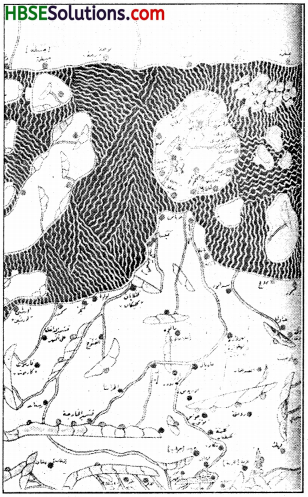
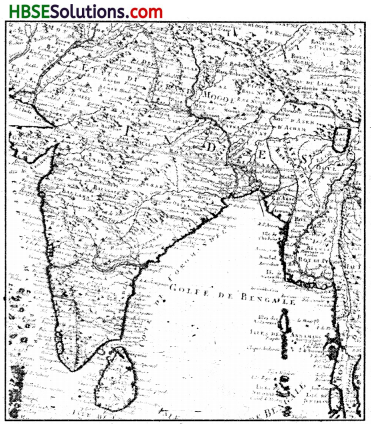
![]()
![]()
![]()
![]()
